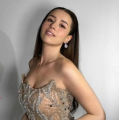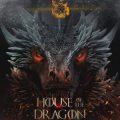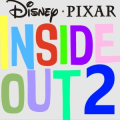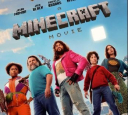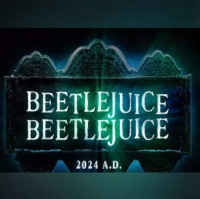
Beetlejuice Review
Beetlejuice
From the moment the title sequence of Beetlejuice commences, the audience is transported into a world that is both visually spectacular and unapologetically quirky. Directed by Tim Burton and released in 1988, this film represents a unique intersection of comedy, horror, and fantasy. A vivid mosaic of bold gothic styles blended with 1980s suburban American surrealism, Beetlejuice emerges as a timeless piece with enduring charm.
History and Context
To understand the allure of Beetlejuice, one must appreciate the zeitgeist of the 1980s. This was a decade marked by excess, extravagance, and a new wave of artistic experimentation in cinema. Against this backdrop, Burton, with his unparalleled vision, crafted a film that stood out, even among its contemporaries. Drawing heavily on gothic motifs and dark humor, Burton’s storytelling was a breath of fresh air in an era that celebrated bold, often unconventional approaches.
The Basic Premise
The film introduces us to Adam and Barbara Maitland, portrayed by Alec Baldwin and Geena Davis respectively. Their lives take an unforeseen detour when they tragically pass away in a car accident. Returning as ghosts, they attempt to navigate their newfound afterlife, only to find themselves haunted by the living. Their idyllic Victorian home is sold to the audacious Deetz family, led by the divergent personalities of Charles and Delia Deetz, accompanied by their goth-leaning daughter Lydia, played by a young Winona Ryder.
Character Dynamics
The juxtaposition of the mild-mannered Maitlands with the brash, city-slicker Deetzes creates the first layer of the film’s comedic tension. Baldwin and Davis render their characters with a gentle likability, while Catherine O’Hara and Jeffrey Jones, as Delia and Charles, inject a level of absurdity and high-energy chaos. Ryder’s Lydia, with her melancholic yet wise demeanor, serves as the bridge between the two worlds – the living and the dead.
Enter Betelgeuse
Amid this chaos, the film introduces its titular character, Betelgeuse, portrayed by Michael Keaton. As a so-called ‘bio-exorcist,’ Betelgeuse exists to rid the living of unwelcome ghosts. Keaton’s interpretation is nothing short of electrifying. His Betelgeuse is a menacing yet magnetic presence, embodying a frenetic blend of wit, malevolence, and sheer absurdity. Every scene featuring him bristles with an unpredictable energy, making him both repellent and fascinating.
Visual Mastery
One of the standout aspects of Beetlejuice is its stunning visual aesthetic. The set designs oscillate between the conventional and the bizarre, with each environment carefully curated to reflect the internal world of its inhabitants. The Maitlands’ house, for instance, undergoes a transformation that parallels the chaotic intrusion of the Deetz family, evolving from a quaint abode to a masterpiece of modern distortion.
The Afterlife Bureaucracy
Burton’s imagination shines brightest in his depiction of the afterlife. Rather than a serene or mystical realm, the afterlife in Beetlejuice is portrayed as a bustling bureaucratic entity. With queues, paperwork, and apathetic civil servants, the film humorously reflects our own world’s intricacies and inefficiencies. This creative choice not only provides comedic relief but also underscores the film’s satirical edge.
Costume and Makeup
The film’s visual splendor is further enhanced by its outstanding costume and makeup work. Betelgeuse himself is an exemplary testament to this, with his disheveled outfit, moss-covered face, and unruly hair making him instantly recognizable. Delia Deetz’s avant-garde wardrobe choices, laden with postmodern finesse, juxtapose sharply against the more traditional attire of the Maitlands, illustrating the clash of old-world charm with contemporary ostentation.
Soundtrack and Score
Adding another layer to the film’s distinctive atmosphere is its buoyant and eclectic soundtrack. Danny Elfman’s score, with its haunting yet whimsical melodies, complements Burton’s vision perfectly. The soundtrack not only amplifies the moods and transitions but also enhances the storytelling, making each scene pulsate with life (or afterlife).
Why Beetlejuice Is Interesting
What sets Beetlejuice apart from its peers is its fearless commitment to originality. The film blends elements of macabre humor with biting satire, weaving a tale that feels both offbeat and poignant. Its exploration of themes such as death, the afterlife, and the fear of being forgotten resonates on a deeper level, wrapped in layers of eccentricity and humor that make it accessible and enjoyable.
My Impressions
Watching Beetlejuice for the first time is an unforgettable experience. From the inventive storyline to the vibrant characters and extraordinary visuals, every element feels meticulously crafted to engage and entertain. The witty dialogues, combined with the film’s unique aesthetic, kept me enthralled throughout. What struck me most was how it remained relatable despite its fantastical premise – it spoke to the universal human experiences of belonging, identity, and the impact of change.
Performances That Shine
A particularly standout performance is Michael Keaton's portrayal of Betelgeuse. His ability to infuse the character with a frenetic energy while maintaining a sense of underlying menace is commendable. Additionally, Winona Ryder’s Lydia Deetz is both hauntingly relatable and refreshingly individualistic. Through Lydia, the film explores themes of loneliness and the search for understanding, making her a touchstone for many viewers.
The Film's Legacy
Since its release, Beetlejuice has garnered a cult following, influencing numerous aspects of pop culture. Its distinctive visual style and iconic characters have been referenced and parodied across various media, cementing its place in cinematic history. It has inspired fashion trends, Halloween costumes, and even a Broadway musical, attesting to its lasting impact.
Technical Excellence
The film’s technical achievements should not be overlooked. The seamless integration of practical effects with stop-motion animation adds to its unique charm. Burton’s craftsmanship ensures that even the most surreal sequences feel grounded within the film’s internal logic, allowing viewers to suspend disbelief and immerse themselves fully in the narrative.
The Humor and Satire
At its core, Beetlejuice is a comedy. Its humor ranges from slapstick to dark satire, often poking fun at societal norms and human follies. The Deetzes’ gaudy renovations and their mercenary approach to the supernatural serve as a critique of consumerism and the commodification culture of the 1980s. This layered humor ensures the film remains engaging on multiple levels.
A Timeless Appeal
Despite its 1980s roots, Beetlejuice possesses a timeless appeal. Its exploration of existential themes, coupled with its innovative artistry, ensures that it continues to resonate with new generations. There is a playful irreverence in its storytelling that transcends time, making it a perennial favorite among audiences.
Conclusion
In summary, Beetlejuice is more than just a film; it is an inventive and spirited exploration of life, death, and everything in between. Tim Burton’s visionary direction, combined with stellar performances and groundbreaking visual effects, culminates in a cinematic masterpiece that is as thought-provoking as it is entertaining. Watching Beetlejuice is an experience – one that invites viewers to embrace the bizarre, celebrate the unconventional, and, above all, revel in the magic of storytelling.
Beetlejuice

To download the app, you will get links to the Official Website and/or official digital markets.



